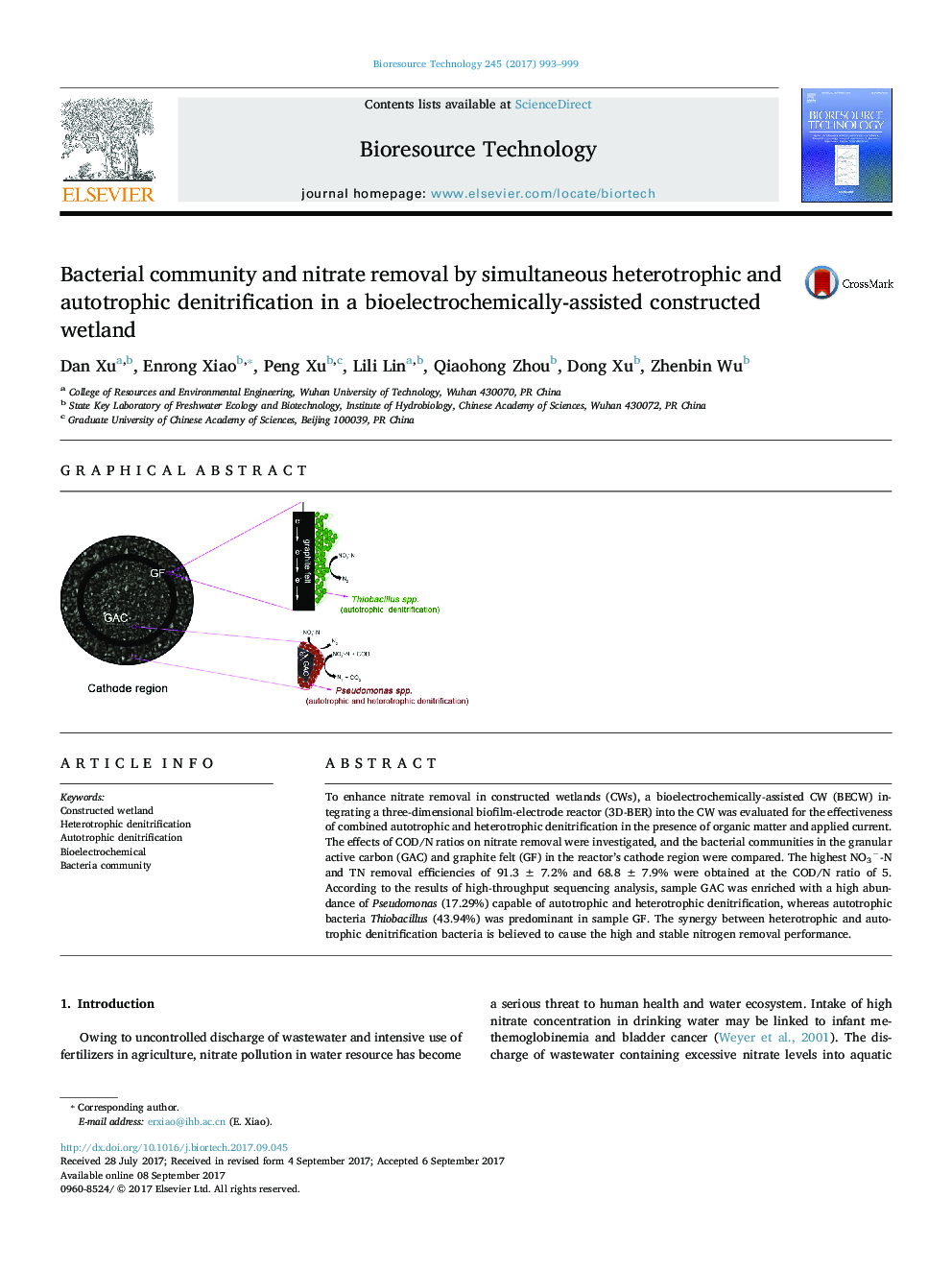| Article ID | Journal | Published Year | Pages | File Type |
|---|---|---|---|---|
| 4996804 | Bioresource Technology | 2017 | 7 Pages |
â¢Nitrate was effectively removed in BECW in the presence of organics and current.â¢Heterotrophic and autotrophic denitrifiers resulted in efficient nitrate removal.â¢Cathodic microbial communities in GAC and GF were compared.â¢Pseudomonas and Thiobacillus were predominant in sample GACc and GFc, respectively.
To enhance nitrate removal in constructed wetlands (CWs), a bioelectrochemically-assisted CW (BECW) integrating a three-dimensional biofilm-electrode reactor (3D-BER) into the CW was evaluated for the effectiveness of combined autotrophic and heterotrophic denitrification in the presence of organic matter and applied current. The effects of COD/N ratios on nitrate removal were investigated, and the bacterial communities in the granular active carbon (GAC) and graphite felt (GF) in the reactor's cathode region were compared. The highest NO3â-N and TN removal efficiencies of 91.3 ± 7.2% and 68.8 ± 7.9% were obtained at the COD/N ratio of 5. According to the results of high-throughput sequencing analysis, sample GAC was enriched with a high abundance of Pseudomonas (17.29%) capable of autotrophic and heterotrophic denitrification, whereas autotrophic bacteria Thiobacillus (43.94%) was predominant in sample GF. The synergy between heterotrophic and autotrophic denitrification bacteria is believed to cause the high and stable nitrogen removal performance.
Graphical abstractDownload high-res image (75KB)Download full-size image
